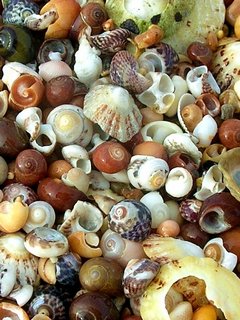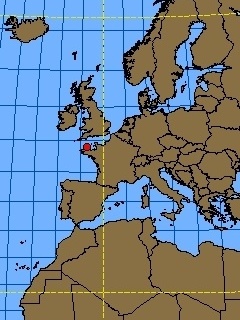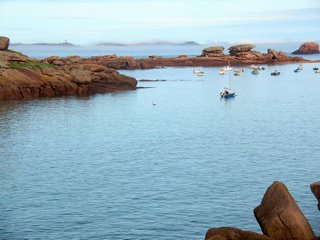
|
The French name of this region is "La Cote De Granit Rose" (The Pink Granit Coast) is not usurpated at all and the granit formations must be seen , especially when it's sunny after a shower. Then the purplish coloration of the rocks contrasts against the blues , the greens and the turquoises of the sky, the trees and the sea.
We walked along this beautiful coast in midday at low tide , and I was hesitating to look at the landscape or at the ground for shells.
However, we could see live Patellidae and Trochidae on the rocks and especially nice
Phorcus lineatus
. A few stops on sand patches provided a good deal of dead gastropods shells mainly composed of Littorinidae and Trochidae. Amongst them a number of
Littorina obtusata
with its exquisite color variations (yellow to orange to brown, green to black, etc.), a few Littorina littorea which is a famous seafood here (sold as Bigorneaux) and some species of the genus Gibbula.
Amongst the bivalve shells, Mytilus edulis and Cerastoderma edule were everywhere. There could be also found a few Veneridae I did not succeed in identifying except for a good specimen of
Ruditapes decussatus
. A pink specimen of
Tellina tenuis
was also collected here as a recall of the color of the surrounding boulders.
|








